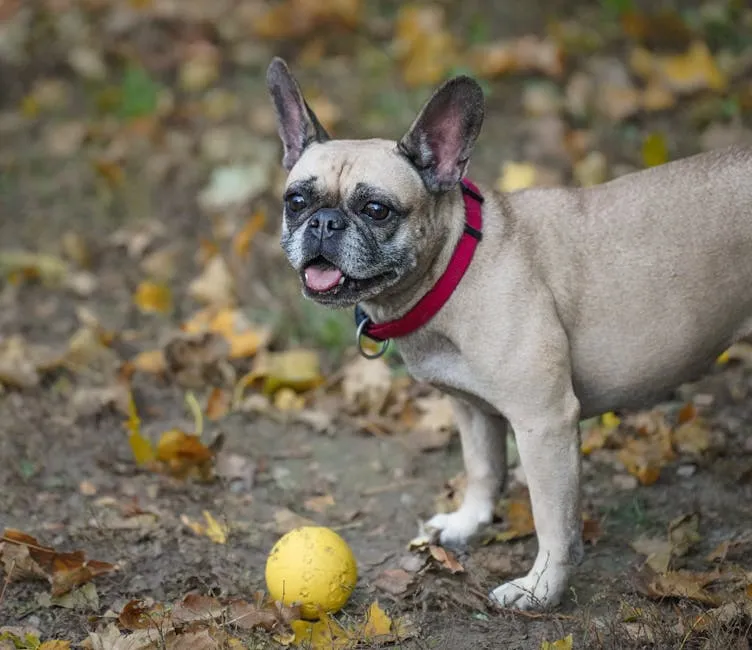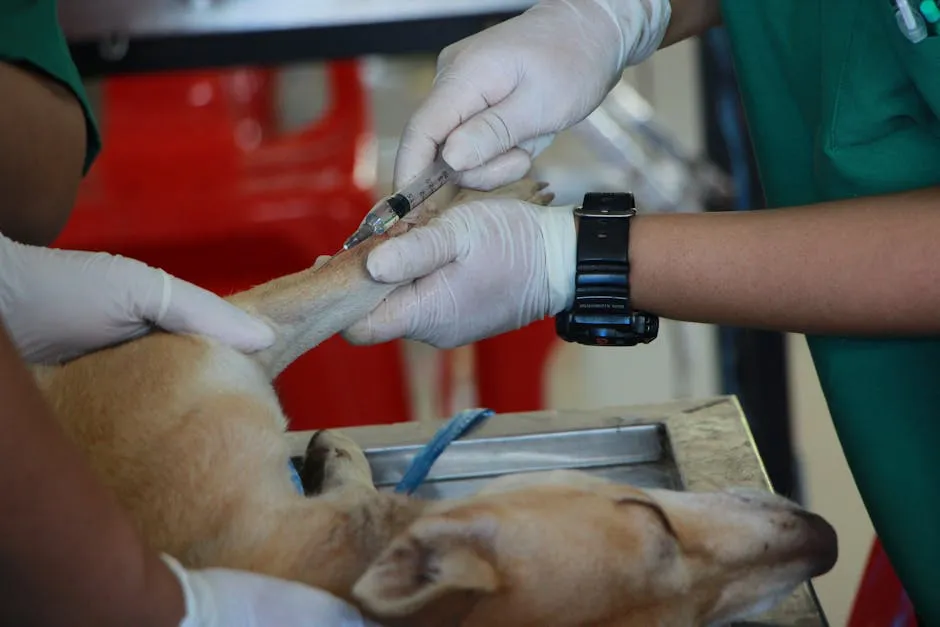Introduction
Are you thinking about adding a Pom Dog to your family? This hybrid breed has captured the hearts of many pet owners. With their lively personality and adorable looks, Pom Dogs are hard to resist. In this guide, we’ll dive into their unique traits, care needs, and suitability for various lifestyles.
And while you’re preparing for your new furry friend, don’t forget the essentials! A good dog grooming brush will keep that fluffy coat in tip-top condition!
Summary and Overview
Pom Dogs, often known for their charming demeanor, are a delightful mix of Pomeranian and another breed, typically the Chihuahua or Poodle. These small pups have gained popularity for their affectionate nature and playful spirit. As hybrid breeds become more common, Pom Dogs stand out due to their striking appearance and lively character. They balance energy with sweetness, making them perfect companions for active individuals or families.
When you’re out and about with your Pom Dog, a reliable dog harness can make all the difference in ensuring their comfort and safety.

Characteristics of Pom Dogs
Appearance
Pom Dogs are small, usually weighing between 4 to 12 pounds. Their height can range from 8 to 12 inches. These dogs have a thick double coat that comes in various colors, including orange, cream, black, and even unique shades like blue or lavender. Their fluffy fur gives them a lion-like appearance, which many find irresistible. Depending on the parent breeds, you may notice slight variations in size and coat texture. For example, a Pom Dog with a Poodle parent might have a curlier coat, while one with a Chihuahua might be sleeker.
Speaking of that gorgeous coat, using a great dog shampoo is crucial for keeping it clean and healthy. Choose one that suits their sensitive skin!
Pom Dogs typically have expressive dark eyes and small, upright ears that add to their cute factor. Their tails are often fluffy and plumed, curling over their backs. With such a variety of colors and styles, each Pom Dog has its own unique charm. Whether you’re drawn to a classic orange or a rare color, their looks are sure to turn heads.
Overall, the Pom Dog’s appearance is a delightful mix of cuteness and character, making them a favorite among dog lovers.

Care and Maintenance
Grooming
Caring for your Pom Dog’s coat is essential. Their thick double coat requires regular attention. Aim to brush them at least twice a week. This helps prevent matting and reduces shedding. During shedding season, daily brushing is even better.
Bathing your Pom Dog should occur every 1 to 4 weeks. Use a gentle dog shampoo to keep their coat clean and healthy. Professional grooming every 4 to 6 weeks can also help maintain their appearance.
Pay special attention to their eyes and teeth. Pom Dogs can be prone to tear staining. Wipe their eyes with a damp cloth regularly. For dental care, brush their teeth a few times a week. This prevents plaque buildup and keeps their breath fresh. Consider adding dog dental chews to their routine for added oral health benefits!
Nutrition
A balanced diet is crucial for your Pom Dog’s health. Choose high-quality dog food that meets their nutritional needs. Look for options specifically formulated for small breeds. This ensures they receive the right balance of protein, fat, and carbohydrates.
Portion sizes matter, too. Follow the feeding guidelines on the dog food packaging. Adjust portions based on your dog’s age, weight, and activity level. Overfeeding can lead to obesity, which is a common concern for small breeds. To help with portion control, a dog food storage container can keep their food fresh and make serving easier!
Avoid unhealthy treats like table scraps. Instead, opt for low-calorie dog treats. These can be great for training without compromising their health. Remember, moderation is key when providing any treats.
By prioritizing grooming and nutrition, your Pom Dog will thrive. They’ll be happy, healthy, and ready for all the fun adventures you have in store!

Exercise Requirements
Daily exercise is crucial for your Pom Dog’s well-being. These energetic little pups thrive on activity. Regular playtime keeps them physically fit and mentally stimulated. Without enough exercise, they can become bored and develop behavioral issues.
Aim for at least 30 to 60 minutes of exercise each day. This can be broken down into several short walks or play sessions. Pom Dogs enjoy interactive games like fetch or tug-of-war. For added fun, consider an interactive dog toy that will keep them engaged for hours!
Lack of exercise can lead to health problems. Obesity is a common concern, especially in small breeds. Weight gain can cause joint issues and other serious health concerns. Keeping your Pom Dog active will help prevent these potential problems.

Training and Socialization
Basic Training
Obedience training is essential for Pom Dogs. These clever pups need to learn commands early. Positive reinforcement works best. Reward them with treats or praise for good behavior. Consistency is key, so practice regularly.
Start with basic commands like “sit,” “stay,” and “come.” Once they master these, you can teach fun tricks like “roll over” or “play dead.” Training strengthens your bond and builds their confidence. Using a dog training clicker can enhance your training sessions!
Socialization
Socializing your Pom Dog is just as important. Exposing them to different people and pets helps them develop good behavior. Start by introducing them to a variety of environments. Take them to parks, cafes, or friends’ homes.
When meeting new dogs, monitor their interactions closely. Keep introductions positive and calm. Gradually increase exposure to help them feel comfortable.
Poorly socialized dogs can develop anxiety or aggression. They may become fearful or overly protective. By ensuring proper socialization, you promote a well-adjusted and happy Pom Dog. For tips on managing these behaviors, consider reading a dog training book.

Health Considerations
Common Health Issues
Pom Dogs, while generally healthy, can face specific health challenges. Some of the most common issues include:
- Patellar Luxation: This condition involves the kneecap slipping out of place. It can cause pain and limping.
- Collapsing Trachea: This occurs when the cartilage rings in the trachea weaken, leading to breathing difficulties.
- Hypoglycemia: Small breeds like Pom Dogs can suffer from low blood sugar, leading to weakness or lethargy.
- Eye Problems: Conditions such as cataracts and dry eye are frequent, requiring regular eye care.
- Dental Issues: Pom Dogs often face dental overcrowding, which can lead to gum disease.
Preventive care is essential for maintaining your Pom Dog’s health. Regular vet check-ups help catch any potential problems early. Keeping a close eye on their dietary habits and exercise can also prevent many health issues.
Understanding hereditary conditions is crucial too. Some Pom Dogs may inherit health problems from their parent breeds. Familiarizing yourself with these conditions can help you provide better care and make informed decisions.

Lifespan and Overall Health
Pom Dogs typically enjoy a lifespan of 12 to 16 years. Various factors influence their longevity and overall health. These include genetics, diet, exercise, and regular veterinary care.
Maintaining a healthy weight is vital. Overweight dogs often face health complications, including diabetes and joint issues. Studies show that dogs with a balanced diet and regular exercise live longer, healthier lives.
Monitoring their health with regular vet visits can help catch issues early. Statistics indicate that dogs receiving consistent care tend to enjoy longer lifespans and better quality of life. Keeping your Pom Dog active and engaged will contribute to their overall well-being.

Finding the Right Pom Dog
Choosing a Reputable Breeder
When looking for a Pom Dog, selecting a reputable breeder is key. A good breeder prioritizes health and temperament. Look for breeders who encourage you to meet the puppy’s parents. This helps assess their behavior and health.
Important factors include health clearances for common issues. Ask about the puppy’s lineage to ensure you’re adopting a healthy dog. Breeders should provide documentation for any health tests performed.
Consider adopting from shelters or rescues as well. Many wonderful Pom Dogs await loving homes. By choosing adoption, you give a dog a second chance while also finding a great companion. If you’re planning to travel with your new friend, a pet carrier is a must-have for those trips!
Ultimately, whether you choose a breeder or a rescue, being informed and cautious will lead to a healthy, happy Pom Dog.

Cost Considerations
Thinking about bringing a Pom Dog home? It’s essential to understand the costs involved. On average, Pom Dogs can cost anywhere from $500 to $2,000. However, rare colors, like lavender or blue, can push prices up to $10,000.
Several factors influence pricing. Breeder reputation plays a significant role. Well-established breeders often charge more due to their experience and focus on health. Additionally, the dog’s lineage can affect the price. Puppies from champion bloodlines typically come with a higher price tag.
When budgeting for a Pom Dog, consider both initial and ongoing expenses. Initial costs include vaccinations, spaying or neutering, and basic supplies like food, toys, and a bed. A dog bed is a cozy spot for them to rest after a long day of playing!
Ongoing costs involve food, grooming, routine vet visits, and pet insurance. To keep your budget in check, research different breeders and compare prices. Consider adopting from a rescue or shelter. This not only saves money but gives a deserving dog a loving home. Remember, owning a Pom Dog is a long-term commitment, so plan accordingly!

Conclusion
In summary, Pom Dogs are charming companions that adapt well to various lifestyles. Their playful nature and affectionate demeanor make them suitable for families and individuals alike. However, it’s essential to assess your lifestyle before adopting. Are you ready for the joy and responsibility that comes with a Pom Dog? If so, you’re in for a delightful experience!
FAQs
Are Pom Dogs hypoallergenic?
No, Pom Dogs are not considered hypoallergenic. They do shed, which can trigger allergies in sensitive individuals.
How much exercise do Pom Dogs need?
Pom Dogs require about 30 to 60 minutes of exercise daily. Short walks and playtime are essential for their well-being.
What should I feed my Pom Dog?
High-quality dog food is crucial. Avoid table scraps and opt for a balanced diet to prevent obesity.
Do Pom Dogs bark a lot?
Yes, Pom Dogs are known for being vocal. Training can help manage excessive barking.
Can Pom Dogs be left alone?
Pom Dogs can experience separation anxiety. If you must leave them, provide toys and a safe space.
What is the average lifespan of a Pom Dog?
Pom Dogs typically live between 12 to 16 years, influenced by genetics and care.
How do I train a Pom Dog effectively?
Use positive reinforcement techniques. Consistency and patience are key to successful training.
Please let us know what you think about our content by leaving a comment down below!
Thank you for reading till here 🙂
For more information on grooming your Pom Dog, check out our article on recommended grooming schedules for double-coated dogs throughout the year.
Understanding the right nutrition for your Pom Dog is vital; read about the Understanding canine nutrition: raw vs. kibble debate.
For tips on managing your Pom Dog’s behavior, explore our article on effective positive reinforcement techniques for stubborn dogs.
If you’re concerned about separation anxiety, our guide on Understanding and treating canine separation anxiety can help you.
All images from Pexels





